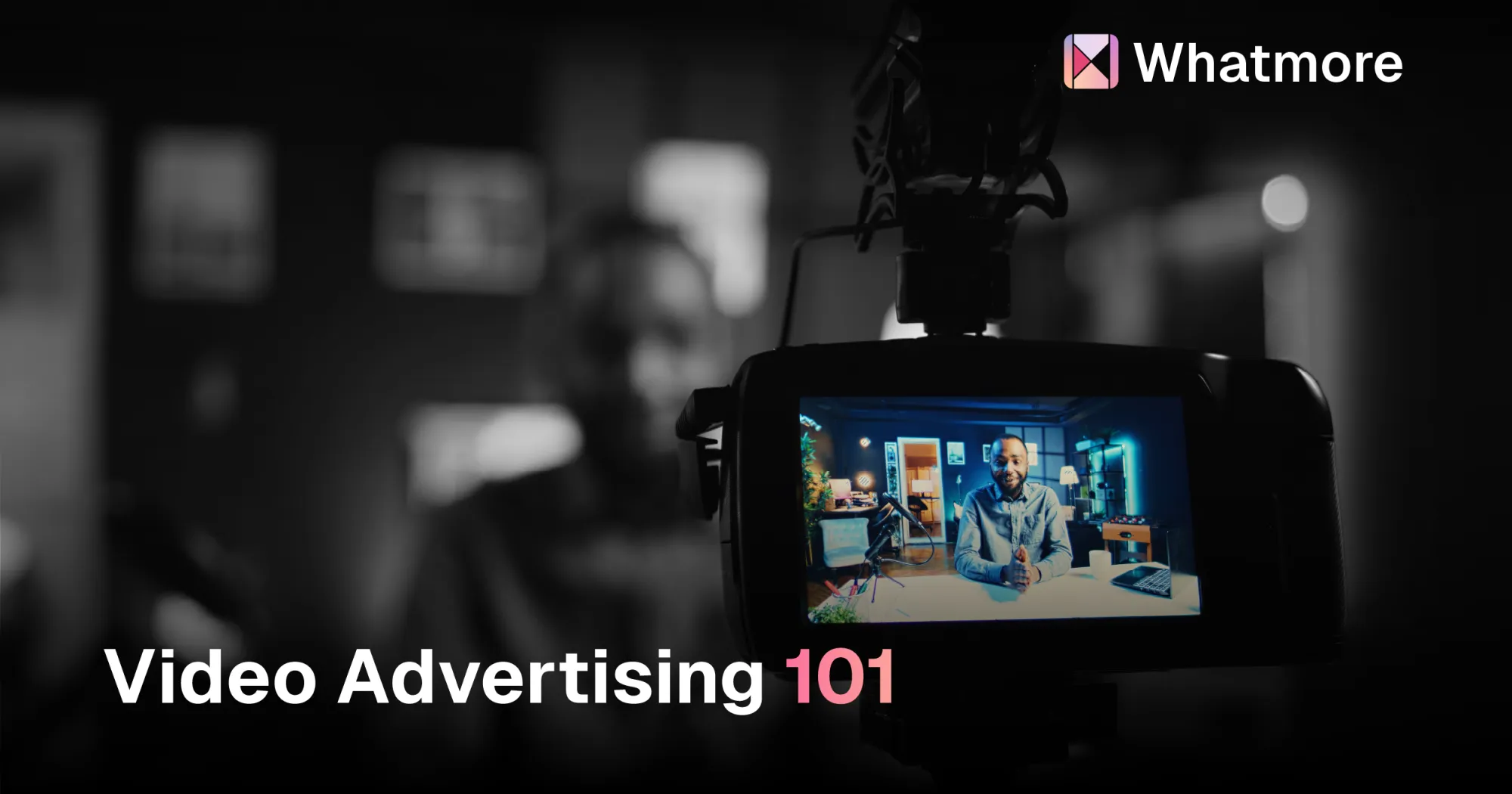Traditionally, video advertising has reached us mainly through TV commercials.
Even today, brands pay an average of $7 million for a 30-second spot during the Super Bowl, one of the most-watched sports events in the U.S.
But in 2024, marketers have found more subtle and highly profitable ways to show their video ads across almost every platform. These include:
- Social media ads
- Video ads that pop up next to the article you're reading
- User-generated content (UGC) video ads from influencers
- Shoppable video ads
- Video ads that play between YouTube videos
- Email video advertising
This is largely because brands understand that video grabs attention quickly and makes a lasting impact.
In this article, we’ll go over the ABCs of video advertising and understand how you can make budget-friendly video ads that convert customers.
What Is Video Advertising?
Video advertising is a way for brands to promote their products or services using videos. These ads can appear on TV, websites, social media platforms, billboards, and more.
The main goal is to catch people’s attention and make them buy from you.
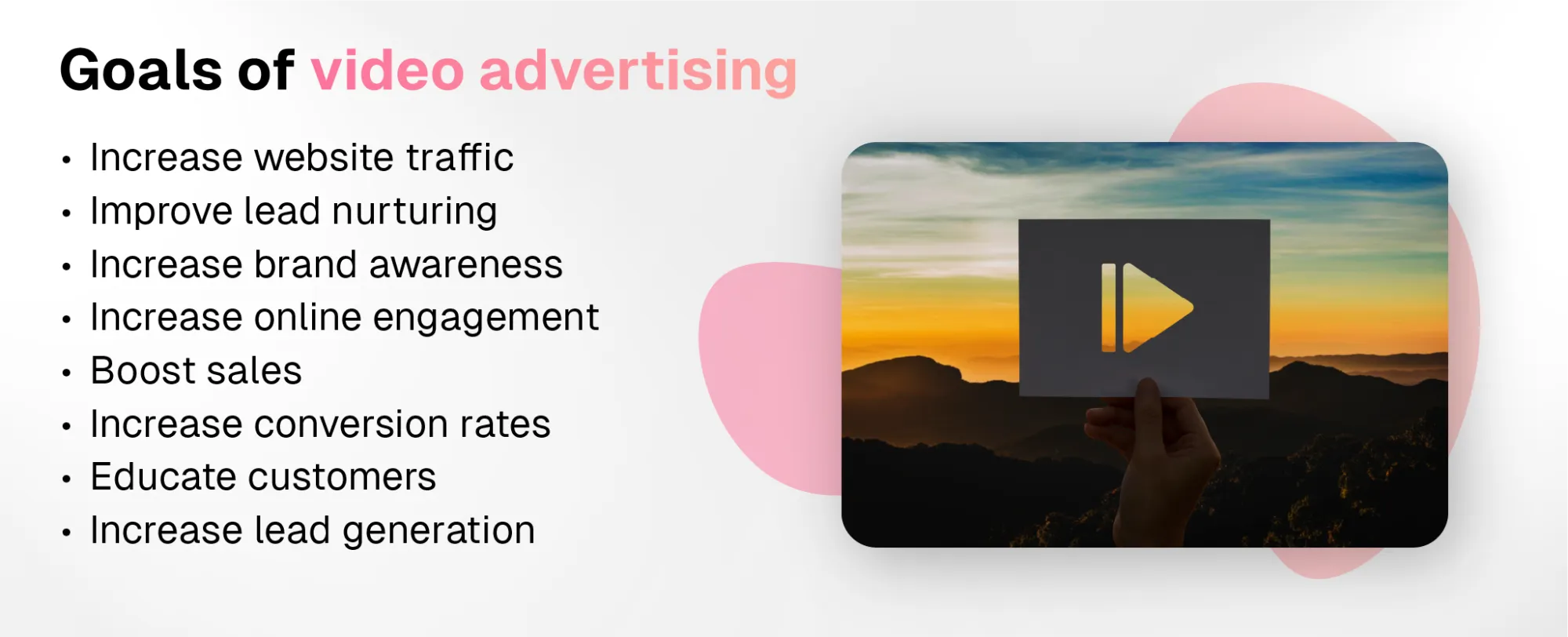
Video ads can be entertaining, informative, aspirational, or even funny. They can help your brand connect with the audience in a memorable way.
Why Video Advertising?
Video advertising is the most visual form of advertising.
Text and image-based ads capture your eyes. Audio ads like those on the radio or podcasts engage your ears. Video ads capture both.
This dual engagement makes video ads incredibly effective at holding attention. In fact, studies show that viewers remember 95% of a message when they watch it in a video compared to just 10% when reading it in text.
Another reason video ads work so well is that they require minimal effort from viewers.
With a person speaking, a mix of different shots, or engaging storytelling, it’s easier for people to focus and understand the brand’s message.
As a marketer, reducing friction between your brand and the audience is important, and video ads help make that possible.
What Brands Benefit From Video Advertising?
Any brand that wants to engage its audience, build awareness, or drive sales can benefit from video advertising whether you’re selling products, services, or promoting a cause.
Let’s take the 45-second video ad from Adobe as an example.
The heartwarming ad shows a father trying (and failing) to teach his daughter the joys of DIY home repairs. The ad then very naturally shifts to them using Adobe Acrobat to fix a bid with a home contractor.
Even though it’s not the flashiest product, Adobe still manages to connect with its audience in an emotional way.
And as you can see in the comments, the ad sparked mostly good reactions from the viewers.
The type of video ad may change depending on your product and your target audience.
For example, a video ad for an SEO tool may focus more on explaining the features of the SEO tools targeted towards marketers.
Where Video Advertising Does Not Work
While video advertising can be highly effective, it's not always a surefire way to boost sales. Here are some scenarios where video ads may not bring the ROI you expect:
- Short purchase cycle products
Products with a short buying process (e.g., snacks, toiletries), may not need video ads.
A quick social post or display ad might suffice to catch attention without investing in full video production.
- Hyper-local businesses
For small local businesses like family-owned restaurants or neighbourhood services, the broad reach of video ads might be unnecessary.
Instead, more targeted approaches like word-of-mouth, social media posts, or local SEO yield better results.
- Highly-technical niche products
Businesses targeting a highly specific, technical, or niche audience (e.g., industrial equipment suppliers or specialized software developers) may not benefit much from video ads.
Their audience often prefers detailed, written content like white papers or case studies.
- Luxury brands with niche audiences
For some high-end luxury brands (e.g., custom yachts, fine art dealers), the broad reach of video ads might dilute their exclusivity.
By understanding these limitations, marketers can better decide whether video advertising fits their marketing goals or if alternative strategies would serve them better.
Common Elements Of Every Great Video Ad
When was the last time you watched a video ad that really stuck with you?
Can you recall something that grabbed your attention immediately and stopped you from scrolling? Something you watched through the end without feeling annoyed?
If you think about it, most memorable video ads share 2 common factors:
- They hook viewers in the first 3 seconds
- They keep viewers engaged until the end with great storytelling
That’s basically it. Here’s why:
Research shows that you have about 8 seconds to grab viewer’s attention before they go. That’s why, an ad that hooks viewers quickly increases the chances they’ll stick around.
Once you have their attention, good storytelling comes into play.
A great story creates some form of emotional connection (humor, sadness, aspiration) within viewers and keeps them stuck until the end.
This connection makes them more likely to remember your brand and its message. In fact, studies show that ads with a story are 22 times more memorable than those without.
So, when an ad combines a strong hook with engaging storytelling, it grabs attention and increases the chances of encouraging viewers to make a purchase.
How Much Should You Invest In Video Advertising?
Deciding how much to invest in video advertising depends on several factors, including your business size, goals, and target audience. Here are some key points to consider:
1. Your business size and budget
Typically, businesses spend 10% of their annual revenue towards overall marketing. If you’re just starting out, you can allocate 5-10% of your total marketing budget to video marketing.
If you’re a startup or local business, you may want to start with a modest budget of around $1,000 per month to produce simple but effective videos. This budget can be further adjusted depending on how the videos perform the first month.
Larger companies with broader campaigns may invest upwards of $10,000-$50,000 per month, depending on production quality and reach.
2. Content and production costs
Creating high-quality videos requires time, effort, and resources.
Low-cost options include using smartphones or DIY video software for simple ads. However, if you want more polished, professional content, production costs can quickly add up.
For example, hiring a video production company may cost anywhere from $1,500 to $10,000 per video, depending on its complexity.
Tip: Whatmore AI helps lower video production costs by letting you create video ads with AI. By automating certain aspects like editing and generating visuals, you can cut down on production time and still maintain quality.
3. Paid ads budget
Apart from production costs, you’ll need to allocate money for distributing your video.
Platforms like YouTube, Instagram, and Facebook allow you to set daily or monthly budgets for video ads. You can start small, with just $5-$20 per day, and scale up as you see positive returns.
In general, start with a budget you’re comfortable with and track your results.
Over time, you can increase your spending as you see which videos perform best and lead to customer conversions.
Types Of Video Advertising In 2024
Here are some popular forms of video advertising marketers preferred in 2024:
1. Shoppable Videos
Shoppable videos are a type of video ad that lets customers purchase products featured in the video without leaving the platform. These videos include clickable links, product tags, CTAs, or pop-ups that take customers directly to the product checkout.
Shoppable videos reduce the friction of going online and searching for the products mentioned in the video. Customers can just click on the pop-up and get redirected to the product checkout or desired page.
For example, let’s say a fitness influencer shares a reel of their workout routine while wearing a specific smartwatch. As they highlight the smartwatch, a product tag appears in the video (Instagram specifically lets you do this with Instagram Shopping).
That’s a shoppable video.
How shoppable videos help you sell more?
How many times have you seen a cool product while scrolling online and actually bought it?
You might even save the video and promise yourself to buy it soon. But the video buries itself in your saved section as you scroll to the next video and forget the promise you made to yourself.
We don’t blame you at all. The entire process of:
- Going on the internet
- Searching for the mentioned brand’s website
- Verifying if it’s the same brand
- Finding the same product from their products page
- Entering your details on the checkout
Can be very tiring.
The goal of shoppable videos is to reduce this very gap and encourage quick action from your customers.
2. Outstream Video Advertising
Outstream video advertising includes video ads that play outside regular video platforms, like YouTube. You’ll see these ads while scrolling through articles, social media feeds, or even apps. They start playing automatically, usually without sound, and let you unmute or make the video larger.
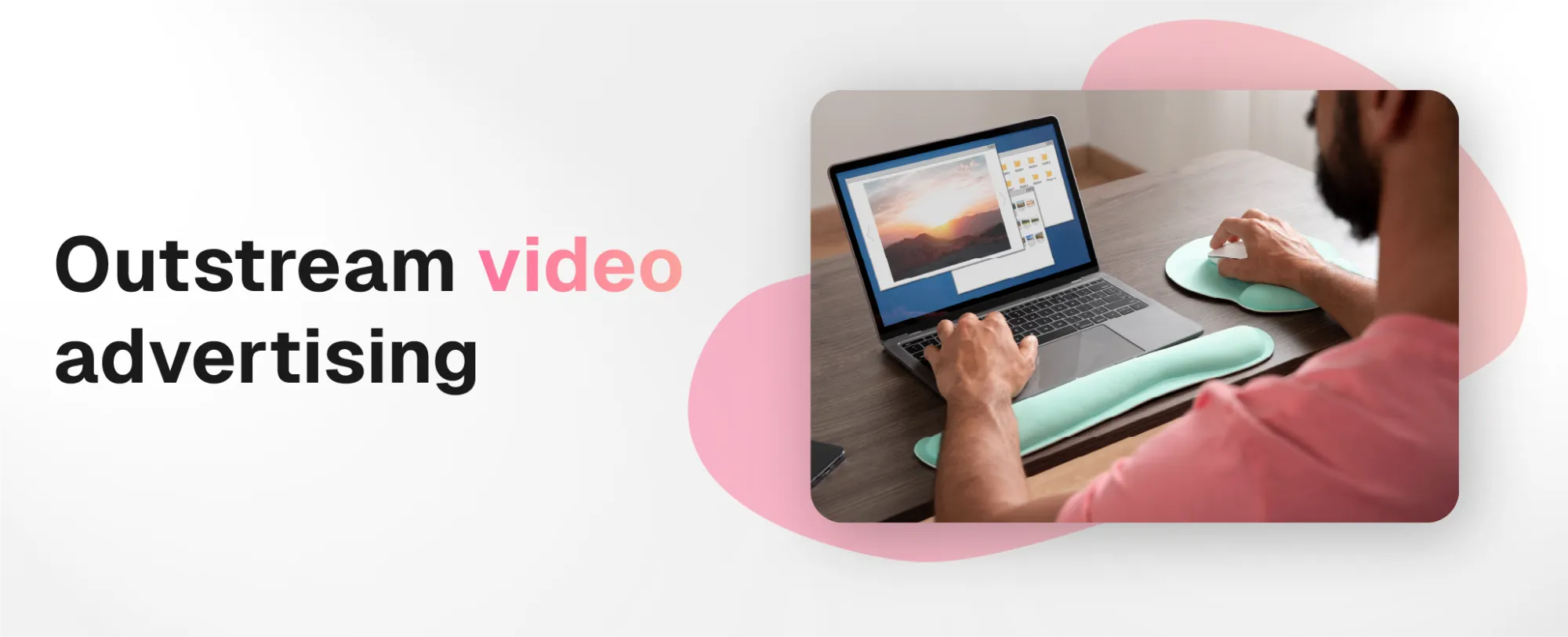
For example, while reading a news article, you might encounter an outstream video ad that plays in the middle of the text or even in the sidebar.
Why should you use outstream video advertising?
If you want to include video advertising into your content marketing campaigns, outstream video advertising is your best option.
Outstream video advertising lets you:
- Mobile-friendly: Outstream video advertising is optimized for mobile viewing experiences.
- Broader integration: Enables video ads to be placed in non-traditional spaces.
- Organic placement: Videos blend naturally within articles or social media feeds.
- Enhanced visibility: By appearing unexpectedly in different content, outstream ads capture attention more effectively.
- Reduced friction: Viewers can engage with videos while consuming other content.
However, it’s important to use outstream video advertising thoughtfully. Outstream video ads are notorious for auto playing without sound or disrupting the browsing experience.
3. Mobile Video Advertising
Mobile video advertising refers to video ads made for mobile devices like smartphones and tablets. These ads fit perfectly into apps, social media feeds, or websites. They’re designed for small screens and vertical viewing, like when scrolling Instagram or watching YouTube videos.
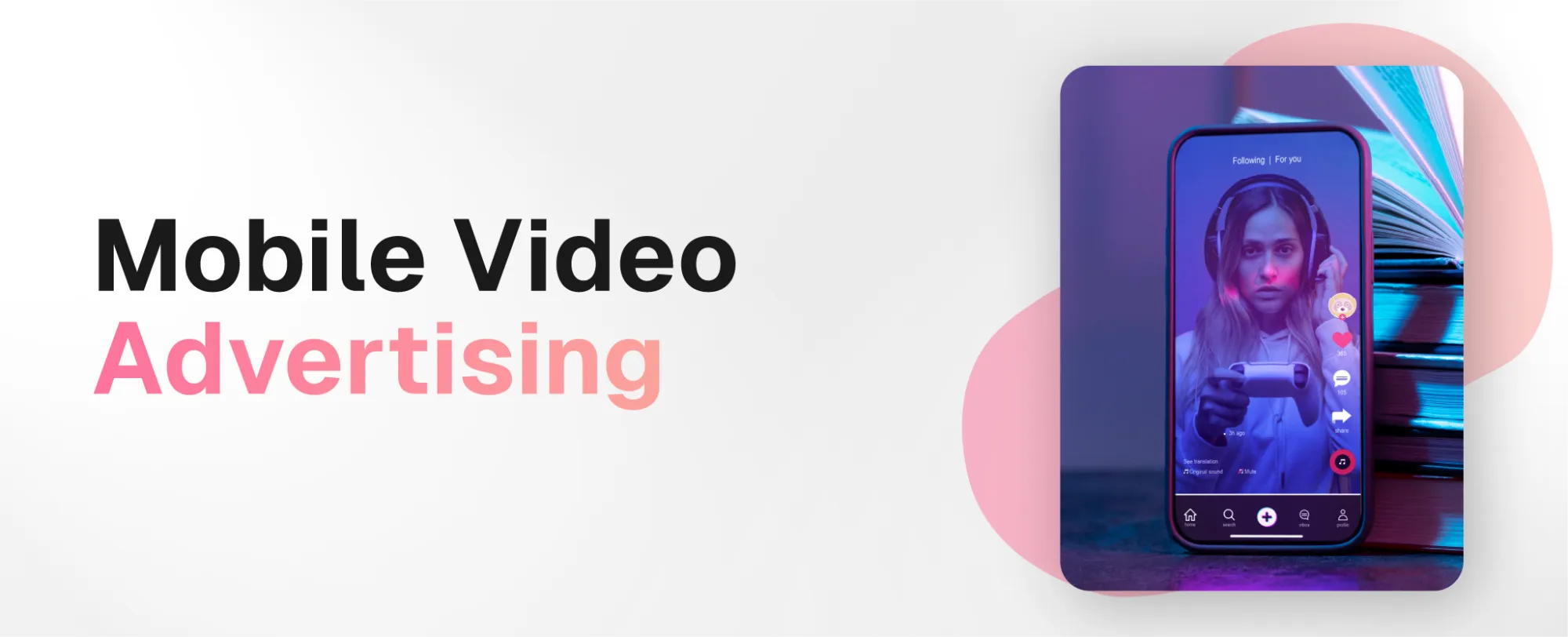
Around 70% of people in the United States say they watch digital video content on their smartphones. Not optimizing your video advertising campaign for mobile is therefore a missed opportunity.
Here are some types of mobile video advertising to consider for your brand:
- Social media video ads: Video ads that show up in your feed such as Instagram posts or Facebook videos.
- Outstream video advertising: As mentioned previously, these are the ads that pop up while scrolling through text content, like an ad in the middle of an article.
- YouTube mobile ads: Ads that play before or during YouTube videos on mobile.
- In-App video ads: Ads that pop up while using apps, like when playing mobile games. For example, a reward video ad in Candy Crush.
4. Programmatic Video Advertising
Programmatic video advertising is how video ad space gets bought and sold automatically using software. This helps marketers reach the right audience by using data about users' interests and online behavior. For example, a brand can target people who visited their website or explored similar products.
Video ad space refers to specific spots where video ads can be shown, including websites, apps, or social media platforms like YouTube and Instagram. For example, businesses can buy ad space on popular sites to reach their target audience effectively.
The software used in programmatic video advertising automates this process, connecting advertisers with the available ad spaces. It also analyzes data on user behavior and demographics to make real-time decisions about which ads to display.
For example, “Google Display & Video 360” helps advertisers manage their campaigns across formats, track performance, and optimize ads based on real-time data.
5. Controversial Ads
"There's no such thing as bad publicity."
Controversial ads are advertisements that stir debate or disagreement due to their provocative content or themes.
For instance, an ad promoting a new energy drink that makes fun of dangerous behaviors, like reckless driving, might upset many people but can also grab attention and boost brand recognition.
Even negative attention can help get your brand noticed. However, you’re walking on a thin line here.
Misunderstandings or backlash can hurt your reputation and make people lose trust in you.
To avoid this, make sure your message matches your brand values and consider how your audience might react before launching a controversial campaign.
One example of controversial ads in 2023 is Skittles' "Recolour the Rainbow" campaign. The ad featured bold themes around inclusivity and gender identity, which sparked mixed reactions.
Some praised the campaign for promoting diversity, while others felt it was too provocative.
Despite the mixed feedback, the campaign effectively captured attention.
6. Google Dynamic Display Ads
Dynamic display ads from Google are a type of ad that automatically adjusts their content based on the viewer’s interests and online behavior. These ads can showcase different images, text, and even products, making them more relevant to each individual.
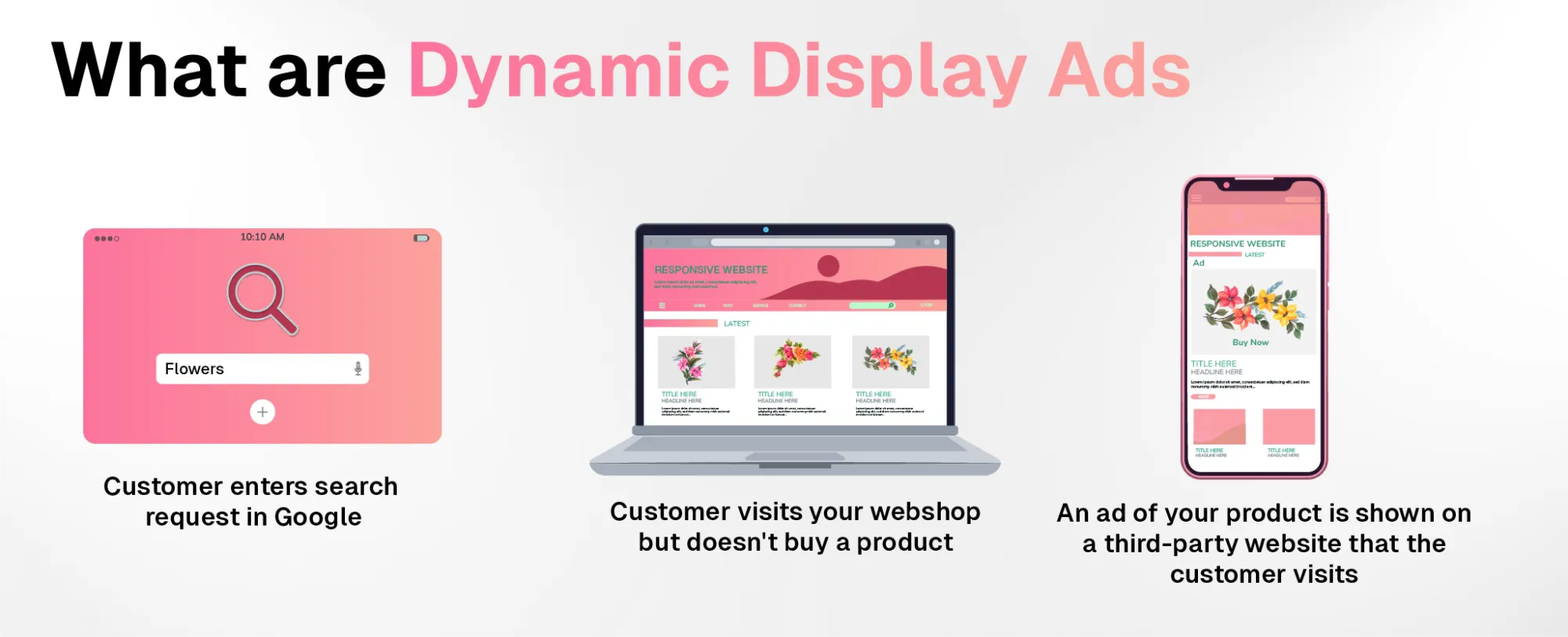
For example, if you’ve recently looked at running shoes online, a dynamic ad may show you a variety of running shoes and related offers.
Dynamic display ads work by pulling in product information from your website, allowing for a personalized ad experience.
If you want to create dynamic display ads for your brand, check out this article.
7. Native Ads
Native ads in video advertising are ads that blend naturally with the surrounding content. They are designed to match the look and feel of the platform where they appear, so they don’t disrupt the user’s experience.
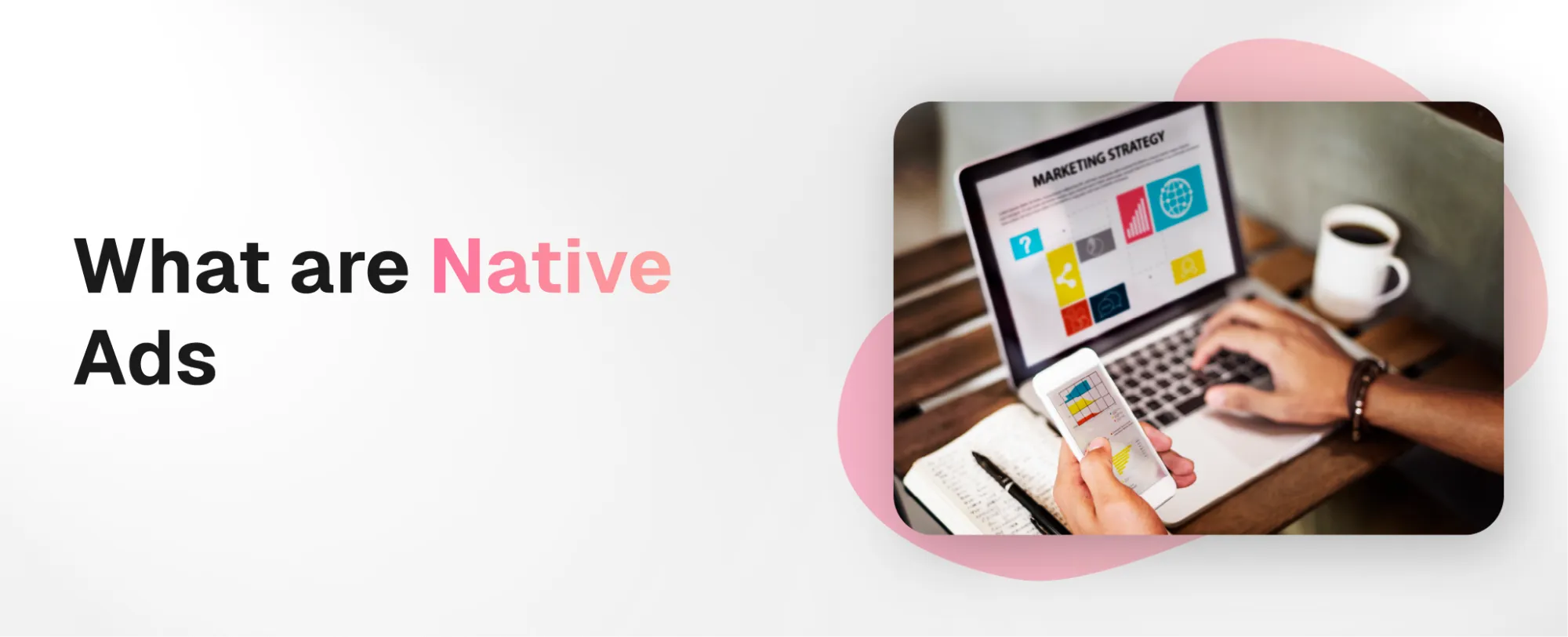
For example, a gardening article might feature a native ad for gardening tools that feels part of the article.
You can look at the Amazon native ads to see how they work. Amazon native ads are advertisements that integrate into the content of various websites and match the style and format of the surrounding content.
For example, if you’re reading a review about the best kitchen gadgets, an Amazon native ad might suggest a specific gadget available for purchase on their site.
This helps users discover products relevant to their interests without feeling like they’re being sold something directly.
Native Ads vs. Display Ads
You might think native ads are similar to display ads, but here are notable differences to understand:
How To Create Video Ads That Sell
Creating effective video ads involves more than just shooting and editing. Here’s a simple guide to help you create video ads that engage viewers and drive e-commerce sales:
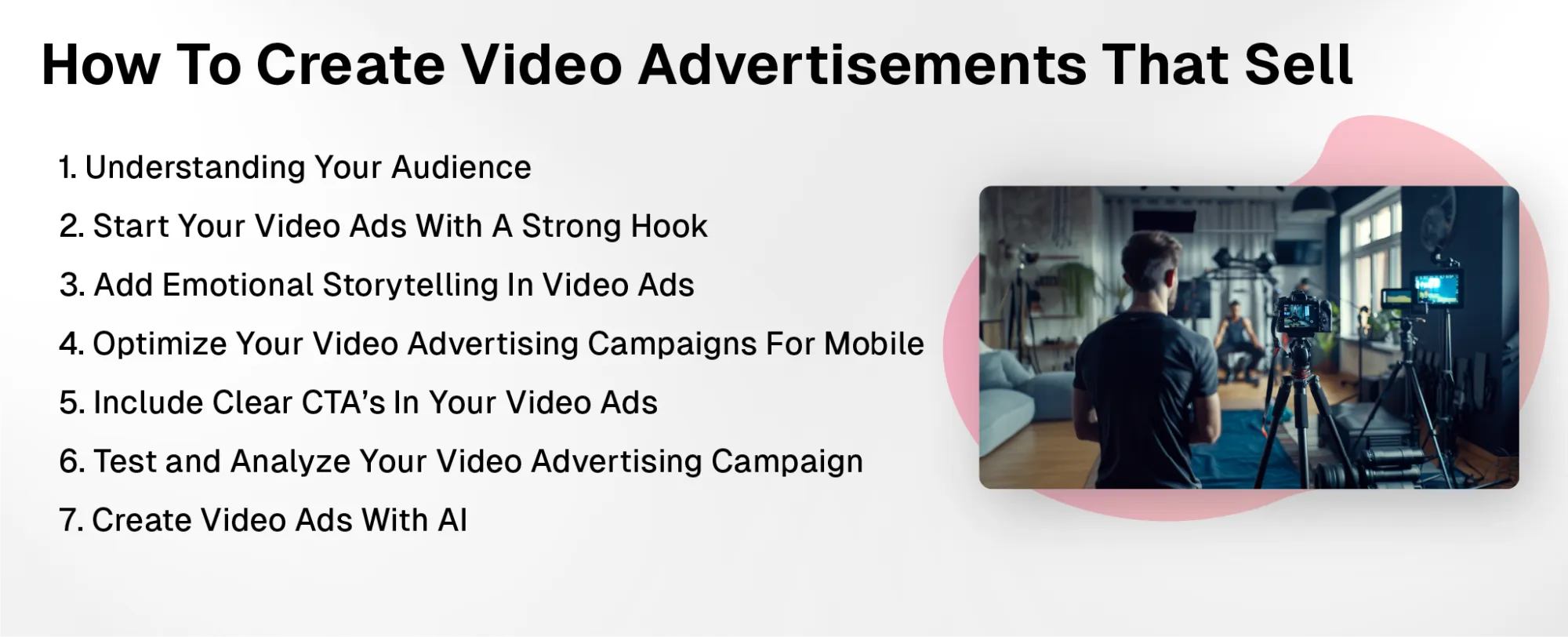
1. Understanding Your Audience
Define who you want to reach with your video ads. Understanding your audience’s:
- Demographics
- Interests
- Pain points
- Their current position in the buyer journey
Will help you create video ads with better conversion rate.
Buyer journey is especially important because people will almost definitely watch a video before making a big purchase decision.
Here’s how you can refine your video advertising strategy based on different buyer stages:
- Top of Funnel (TOFU): Brand awareness videos to introduce your brand to a broad audience.
- Middle of Funnel (MOFU): Product explainer videos that delve deeper into your offerings, helping potential customers understand your value.
- Bottom of Funnel (BOFU): Testimonial or case study videos that build trust and encourage final purchasing decisions.
Finally, after pinpointing your target audience, identify where they spend their time online.
Are they active on social media platforms like Instagram or TikTok? Do they engage with video content on YouTube?
Knowing their preferred platforms ensures your ads reach them effectively.
2. Start With a Strong Hook
Ideally, viewers should understand why your video ad is worth their time within the first 3 seconds.
A good way to hook viewers to present the problem your product solves within the first few seconds itself.
You can start with an intriguing question or statement that resonates with your audience's interests or pain points.
For example, “Struggling to keep your dogs indoors?”
Using eye-catching graphics or animations can help get your point across. Just make sure to avoid anything that feels like a scam or makes big promises, as this can hurt your credibility.
3. Focus On Emotional Storytelling
Great advertising serves our subconscious mind.
By using emotional storytelling in your video ad campaign, you can connect with your audience on a deeper subconscious level.
Emotions can be anything such as joy, fear, sadness, or surprise.
For instance, instead of just showing how great your product is, you might tell a story about someone facing a challenge that your product can solve.
This could be a pet owner who struggled with their dog's behavior but found relief with your solution.
4. Optimize Your Video Advertising Campaigns For Mobile
Most people watch videos on their phones.
This means all the video ads you create should look and function correctly on smaller screens. As a rule of thumb:
- Ensure you use clear visuals
- Add larger text that’s easy to read
- Keep these videos short
- Optimize file sizes so your videos load quickly
Most platforms today, like Instagram, TikTok, and LinkedIn support vertical video formats.
To increase your reach, consider converting your video ads to an vertical format using Whatmore Studio before uploading them.
5. Include A Clear CTA In Your Video Ads
A well-placed CTA tells viewers exactly what you want them to do next, this can be:
- Visiting your website
- Signing up for a newsletter
- Redirecting viewers to your landing page
- Making a purchase
And more.
Adding a CTA allows you to track the effectiveness of your ad. By analyzing how many viewers follow through, you can adjust your strategy to improve results in future campaigns.
6. Test and Analyze Your Video Advertising Campaign
To make sure your video ads really work, you should test and analyze them.
Once your video ad is out there, keep track of how people are engaging with it. Check things like:
- Views
- Clicks
- Video engagement
- Conversion rates
The more you test and adjust, the more effective your video advertising will be.
7. Create Video Ads With AI
Creating videos with AI helps you bypass 2 major hurdles in video advertising: Time and money.
AI also simplifies the video production process, allowing you to create professional-looking ads quickly without needing advanced skills. It also:
- Saves time by automating video creation.
- Reduces costs by minimizing the need for expensive video production services.
- Enhances creativity with a variety of templates and designs.
- Provides personalized content that can resonate better with your audience.
- Allows for quick adjustments based on real-time performance data.
By creating video ads with AI, you can focus more on your marketing strategy and less on the technical details of video production.
Conclusion
In summary, video advertising is a powerful tool for brands looking to engage with their audience effectively.
You can use different types of video advertising according to your business budget, audience, and buyer journey.
In 2024, you can also create video ads with AI that grab attention and convey your message effectively.
These tools can significantly help you with sales for e-commerce by showcasing products in an exciting way and producing them at a faster rate and cost-effective way.
Embracing video advertising gives your marketing efforts a real edge in today's competitive market.
